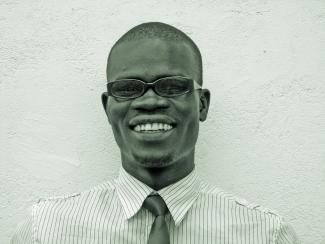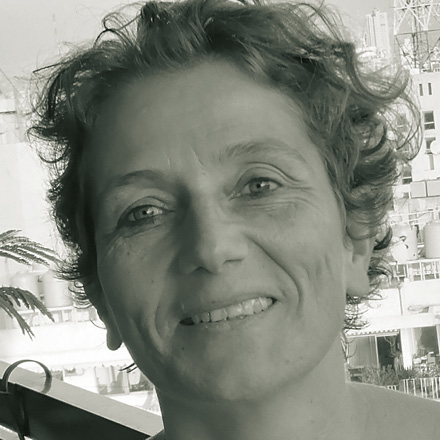Nowadays
Refugee for a lifetime
 Peter Okello
Peter Okello
John Lokololomoy lives in the Kakuma Refugee Camp in northern Kenya. He remembers the day in 1991 when he had to flee for the first time: “All of a sudden I heard gunshots. It was not clear who attacked us, but who cares when the world is coming to an end. One of the rebel army commanders shouted: ‘Kill them! Kill them, burn their houses down if they are still inside!’ All I could do was to run for my life.”
John fled to Ethiopia, joining thousands of Sudanese refugees who were already there. Then he went back to Jonglei State (which is now in South Sudan), until the region was taken by hostile militias and the people had to leave in again. “A plane hit us with heavy bombs. Our huts were burned to ashes; many people lost their lives.” He was on the run for two months. Like many others, John crossed the Kenyan border in 1992. “We were welcomed, and people from the UN gave us food, water, medication and shelter. Later we were taken to this place, Kakuma Refugee Camp.” The camp is run by the UNHCR (UN High Commissioner for Refugees) and has been his home for over 20 years. He has even studied there.
According to official sources, most South Sudanese refugees who fled their country in the 1980s and 1990s were repatriated back to South Sudan in 2010. Many of them had lived their entire adult life in a refugee camp, for more than two decades. In February 2013, John Lokololomoy also decided to return to the newly independent, peaceful South Sudan. “At last, I could live in my own country”, John recounts. “But only few months later, violent unrest started on 15 December 2013, and forced me back to exile yet again. I guess I was born to become a refugee and live as a refugee. But may heaven forbid that I die as a refugee.”
John belongs to thousands of people who have become a kind of nomadic refugee, never getting a chance to settle in one place, with their only permanent home being a UNHCR refugee camp where the conditions are not as harsh as in the villages they come from. In refugee camps, there are schools for learning, health care and medication, and free food for survival. Sometimes, scholarships are offered by the UN to young students. Trainings and vocational schools are also available. “Kenya is the largest refugee-hosting country in Africa”, the UNHCR wrote last year, with around 600,000 persons. The numbers of South Sudanese refugees crossing the border are rising every day however. There is still fighting going on in some regions of South Sudan (see comment on p. 262).
Until the situation stabilises, there is little hope for John Lokololomoy or others to return home. Staying indefinitely in a refugee camp is better than risking one’s life.
Peter Owar Okello is a journalist from Bor, South Sudan. He currently lives in Nairobi. okello17art@gmail.com

